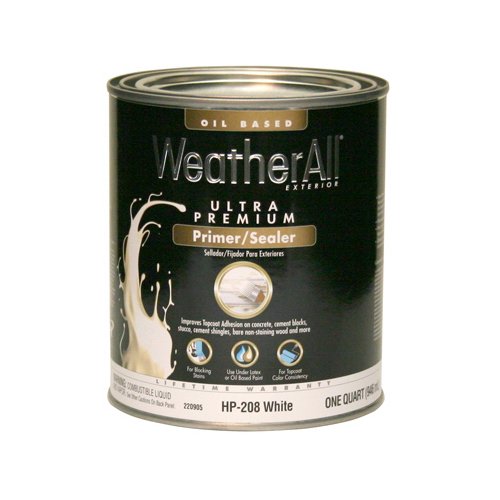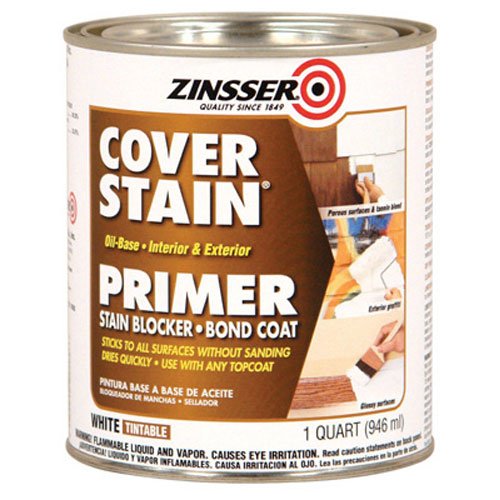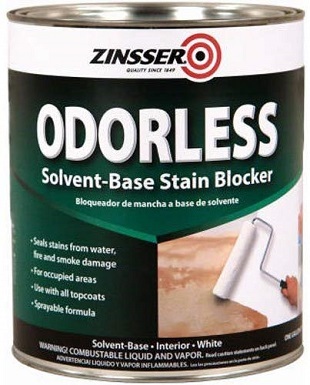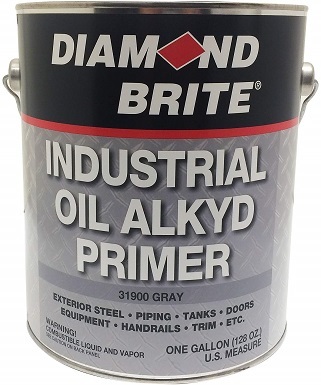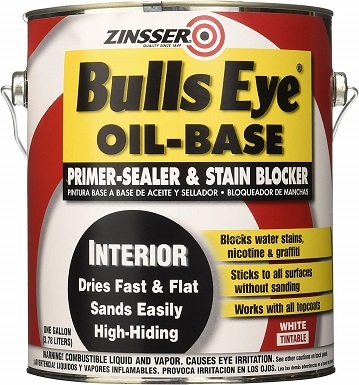10 Best Oil Based Primers for 2025 – Reviews & Buying Guide
-

- Last updated:
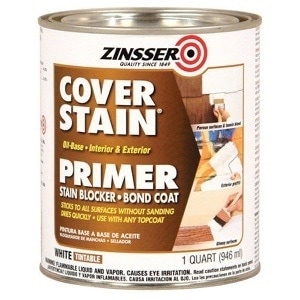

However, not all primer is created equally. Some brands and formulations are great, and others don’t work as well, leaving you with the feeling that you got ripped off. This risk is much greater when shopping online, as getting a feel for the product’s quality can be harder.
We want you to be confident when you shop online, which is why we’ve assembled these reviews of some of the best oil-based primers of the year. We also created a buyer’s guide designed to help you learn about primers so that you know what you want in one before buying.
A Quick Rundown of the Winners in 2025
| Rating | Image | Product | Details | |
|---|---|---|---|---|
Best Overall

|
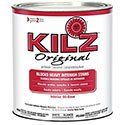
|
KILZ Interior |
|
CHECK PRICE |

|
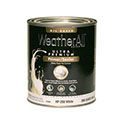
|
WeatherAll Exterior |
|
CHECK PRICE |
Best Value

|
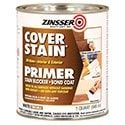
|
Zinsser Cover Stain |
|
CHECK PRICE |
|
|
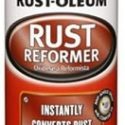
|
Rust-Oleum |
|
CHECK PRICE |
|
|
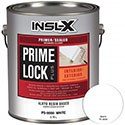
|
INSL-X Prime Lock Plus Alkyd |
|
CHECK PRICE |
Top 10 Best Oil Based Primers – Reviewed
1. KILZ Interior Oil-Based Primer – Best Overall
The KILZ 10902 Interior Oil-Based Primer is the standard-bearer for interior priming projects. It’s an old brand used by professionals for a long time and has improved over the years. In its modern integration, it does a fantastic job of covering stains. If you have wall damage due to leaking water, Kilz will cover up the stains so your paint does not show the damage. However, not only does it look good, but the primer also blocks smells.
Water-damaged materials can smell awful, but this formula blocks smells from pets and smoking that have seeped into the walls over time. Kilz dries to the touch in 30 minutes and is ready to be painted over in as little as an hour, though you get the best result if you let it dry completely, which takes a day or two. It’s also compatible with most wall surfaces, including masonry, brick, and painted metals, where other primers struggle. While it does have strong fumes until it dries, you’re getting the best overall primer on the market with Kilz.
- Blocks stains and smells
- Good for most wall surfaces
- Dries in one hour
- Achieves good color consistency
- Strong fumes
2. WeatherAll Exterior Oil Based Primer Sealer
True Value HP208-QT Exterior Oil Based Primer is an excellent oil-based primer that is designed for the rigors of working outdoors. Any paint or paint-like product you use outdoors will be subject to potential damage from water and must also deal with the sun’s damaging rays. The True Value primer meets those expectations, performing well in all outdoor applications.
This formulation also works well on raw basement floors, which is uncommon among primers. The frequently damp, dirty conditions of basements are no match for True Value’s resistance and durability, even before paint is put down. Plus, it has the added bonus of helping your paint stay consistent, which is good for situations where there’s damage. However, the True Value primer is very expensive, even among primers, so while it works very well, it’s not going to fit into everyone’s budget, which drops it out of first place.
- Exterior primer
- Weatherproof
- Good for basement floors
- Price
3. Zinsser Cover Stain Oil Based Primer – Best Value
The Zinsser 03504 Interior/Exterior primer is some of the best for beginners. First, it’s suitable for interior and exterior applications, so if you’re unsure where your next project will take you, Zinsser is a good choice. It also adds a bit of shine to your paint and sticks well to most surfaces, even if they’re not sanded, making it ideal for beginners.
Even better, it’s reasonably priced, which in the world of primers is saying a lot. The one downside is that it isn’t mold or mildew-resistant, which means that you will have to use an additive or buy a different brand if you’re in an area where that is a concern. You can get this primer for a great price, and given how easy it is to use, it’s also the best primer for beginners.
- Interior/Exterior
- Adds shine
- Good for beginners
- Reasonably-priced
- Not mold-resistant
4. Rust-Oleum Oil-Based Primer
The Rust-Oleum Corporation 03609 has all the features and flaws you would expect from an aerosol-based primer. The good parts include the fact that it comes in a spray can, which means that application will be generally easier than using a brush and typically will involve less clean-up, too. If you’re applying primer to an irregular object with a lot of nooks and crannies, an aerosol spray primer is probably the right direction to go. The Rust-Oleum primer has a powerful spray mechanism you can spray vertically, which isn’t possible with all brands.
However, you’re getting a limited quantity with a spray can, and you must replace the can each time you run out, which means you’re paying for spraying mechanisms each time that you wouldn’t pay for if you had bought a regular can. There’s also the risk of over-spraying the surfaces you’re priming. While there are some upsides to a spray primer, it’s not the best choice for most large-scale projects.
- Comes in spray can
- Powerful spray
- Quantity
- Overspray
5. INSL-X Prime Lock Plus Alkyd Primer
If you need an oil-based primer that can adhere to glossy surfaces, the INSL-X Prime Lock Plus Alkyd primer is one you may consider. While it is on the higher end of the price spectrum, it is quite effective. It dries fast, and you can add your second coat in just one hour.
Once several coats are applied, the INSL-X primer effectively blocks stains. It also has pretty impressive coverage that helps mitigate the high price. Overall, it’s a great product but not the best one we tested.
- Adheres well to glossy surfaces
- Seals stains from water and smoke damage
- Fast-drying, recoat in one hour
- Very expensive
- Needs multiple coats for stain blocking
6. Rust-Oleum Zinsser Odorless Primer & Stain Blocker
The first thing you’ll likely notice about the Rust-Oleum odorless oil-based primer is the low price. At first glance, it seems like a great deal, until you realize how small the coverage area is; 100 square feet for a gallon is not very impressive. However, it has sufficient stain-blocking characteristics, even with just one coat.
The low-VOC formula is good, though the claim of having an odorless formula isn’t exactly true. In our experience, the odor wasn’t overwhelming, but it was certainly noticeable. In all, this is a useful product, but the poor coverage means it’s just not that great of value, and there are other primers that we’re more comfortable recommending.
- Very affordable
- Low-VOC formula
- Poor coverage area
- Not odorless, despite the claim
7. Diamond Brite Oil Base Primer
This affordable primer from Diamond Brite is available in volumes as large as 5 gallons for covering jobs of any size. It can be brushed, rolled, or sprayed on and has a respectable coverage area of 300 square feet. The 6-to-8-hour drying time isn’t amazing, but it’s not as bad as some.
Where the Diamond Brite primer fails is in durability. We first noticed that the finish rapidly lost its glossy sheen in just a few weeks. Aside from that, it scratches very easily from only light contact. The most disappointing result was the flaking and peeling that we experienced in several areas where the primer just didn’t seem to stick properly. Where it worked, it was great, but the spotty performance means we can’t recommend it over other primers that performed better.
- Affordable
- Can be brushed, rolled, or sprayed
- Finish faded in only a few weeks
- Scratches easily
- Flakes and peels
8. Rust-Oleum Primer Spray Paint
As far as spray primers go, the Rust-Oleum 7528383 professional primer spray paint is pretty affordable. However, once you factor in the minuscule coverage area of just 14 square feet provided by one can, you’ll quickly realize it’s not such a bargain. The spray is easy to apply and provides a fair amount of rust protection.
Once we evenly coated our surface with the Rust-Oleum spray, we waited for several hours. Unfortunately, it didn’t seem to tack up. When we checked a few days later, it was only reaching a fully dry condition. This was a big drawback, in our opinion. Making matters worse, it wasn’t even sandable once dry.
Instead of smoothing out, it simply gummed up our sandpaper. Some areas even cracked when drying was complete, meaning more work would be necessary to achieve a clean finish.
- Easy and quick application
- Rust protection
- Takes days to fully cure
- Can’t be sanded for a clean finish
- Prone to cracking when dry
9. Rust-Oleum Zinsser Bulls Plus Spray Primer
Since it’s affordably priced and easy to use, the Bulls Eye 1-2-3 spray primer from Rust-Oleum will be attractive to many consumers at first glance. Unfortunately, the poor coverage of just 12 square feet means it’s not as great a deal as it first appears.
The primer tolerates sanding, unlike the previous Rust-Oleum product, but the spray is difficult to apply. No matter what we tried, our finish was uneven, and the nozzle was continually clogging. When we tried to use it on plastic, it stayed tacky for over a month, refusing to dry completely. Overall, we don’t think this primer is effective, even at its low price.
- Dries quick
- Sands well
- Stays sticky on plastic
- Gets chunky
- Spray nozzle clogs easily
- Not waterproof
10. RUST-OLEUM Bullseye Oil Base Primer
Available by the gallon in a paint-on or roll-on form, this oil-based primer from Rust-Oleum rounds out the bottom of our list. It was easy to sand after drying, but that was our favorite thing about it. For what it offers, we feel it’s overpriced. It only works on unpainted surfaces, so you may be doing a lot of sanding, depending on what you’re trying to cover.
While it did work as a stain blocker, it wasn’t as effective as some of its competitors. When you figure in the high cost, we can’t recommend this product when there are more capable alternatives.
- Sands easily
- Expensive
- Only works on unpainted surfaces
- Not as effective at stain blocking
Buyer’s Guide – Finding the Best Oil Based Primer
We hope our reviews have given you ideas on what to look for in a primer. If you still have questions, that’s okay. This buyer’s guide is designed to give you the lowdown on primer, and even if you’ve never used a primer before, you’ll learn everything you need to consider before buying one. Or, if you’re an experienced painter, this guide should serve as a good refresher course to ensure you haven’t forgotten anything important.
Stain Coverage
One of the best features that you can find in modern primer is the ability to cover up stains in the base material. In theory, paint is supposed to cover up stains, but paint (especially cheap paint), tends to look different when applied to different materials. Sometimes the stains “show through” if you don’t use a primer first. Consequently, finding a primer that does a good job of covering up stains by providing a consistent base for the paint you use is essential.
You should also remember that some stains should be removed instead of covered up. Primer can do many things well but can’t repair structural damage. If your drywall is still wet, covering it up with primer and paint can lock in the moisture and lead to further damage. Also, water coming from behind the wall will cause your paint to seal and run, so make sure you take care of severe problems before starting your paint job.
Smell
Odor protection is another important factor to consider before starting your paint job. Some primers can lock in smells accumulated in your walls, especially if the walls are drywall. If you’re in a house that used to have smokers or pets in it, a smell-fighting primer can be a lifesaver. In those instances, you must ensure the smell comes from the walls. If it’s locked into the carpet, painting the walls isn’t going to do much good.
You also must consider the smell of the primer. Painting or using a primer is a smelly task in most instances. If you’re especially sensitive to odors, consider purchasing an odorless formulation. That may cost you more, but it can be worth it. In some instances, outdoor primer would work just as well indoors, but it’s labeled as outdoor because its fumes are overwhelming in an enclosed space.
You also want to ensure that the area in which you’re working is adequately ventilated. Opening windows while painting inside or moving portable projects outside can greatly reduce the amount of fumes you breathe in.
Drying Time
How long your primer takes to dry is an important consideration. Each brand has a different drying time, which means that the formula you buy should be somewhat dependent on the amount of time that you have to finish the project. Some companies make primer that they claim dries in as little as 30 minutes or an hour. That is only partially true. You can add a layer of paint after 30 minutes or an hour since the primer will be dry to the touch and dry enough to hold the paint.
However, even with quick-drying primer, it’s generally better to wait 24 to 48 hours after applying it to let it dry completely. That extra time generally results in a better bond between the paint and the primer and the primer and the wall, and it also makes the wall look a tad better.
How Each Primer Affects Paint
Every oil-based primer has a slightly different effect on the paint you apply later. While all primers are designed to keep your paint firmly bonded to the wall or other surfaces, some can also change how it looks. Some primers make the final paint you apply look glossier or more matte, so it’s vital that you take the time to research the effects specific primers have on paint.
Also, remember that some primers do better than others at covering up stains. If you’re dealing with stains, ensure you get a primer meant for stain-covering. Otherwise, you’ll probably have to paint over everything again.
Which Primer Is Right for You?
Several primer brands are on the market, and many people make the mistake of buying the cheapest variety they can find. However, not all primers are created equally, and there’s a chance that you’re cheating yourself out of a good deal by buying a cheap spray primer. Although some brands are inexpensive, they don’t offer enough coverage, and you’ll spend more on buying additional cans. It’s better to purchase one of our highly rated formulas that may cost more but provides adequate coverage.
Conclusion
The KILZ 10902 Interior Oil-Based Primer is one of the best primers on the market and rises to the top of our list due to its smell-blocking properties and compatibility with most wall surfaces. True Value HP208-QT Exterior Oil Based Primer comes in second because of how well it works but is kept out of first by its very high price. The Zinsser 03504 Interior/Exterior primer provides the best value and is also the best for beginners due to its low price and versatility. The Rust-Oleum Corporation 03609 is a good spray primer but falls short of the value you can get from traditional primers.
Hopefully, our reviews and buyer’s guide have helped you learn about primer and what you should look for when buying.
Contents

